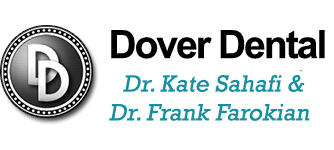Periodontal Disease Treatment
Treating Periodontal Disease
The results of your dental screenings are in and the news is not good. Your dentist says you need treatment and explains that it will be done in stages. First, is a deep cleaning of the spaces between the affected teeth and gums? If that doesn’t control the infection, or if damaged tissue has to be repaired, surgery might be needed. Afterward, you’ll have to get frequent, regular cleanings to maintain control of the disease. You’ll also have to practice good oral hygiene at home and try to reduce other risk factors for gum disease, like quitting smoking or eating fewer sweets. Your dentist may explain that the goal of treatment is to stop the progress of the disease, or at least to control it.
Other goals are to leave the tissues around your teeth in a state that can be easily managed and, if possible, to restore the supporting structures, which include bone, gum tissue, and connective tissue. At this point, you’ll probably have several questions for your dentist. Will the treatment work? And how much will it hurt? How much will it cost?

Does Treatment Work?
The answer is “yes” for 85 percent of patients who get treated early. Treatment works best before there is severe damage to the tissue that attaches the teeth to the bone, and before teeth are missing. This is why it is so important for patients and dentists to be on the lookout for the early warning signs of gum disease: red, swollen gums that bleed easily. Treatment works better for nonsmokers than for smokers.
Treatment for periodontal disease may even help lower other health risks. For example, research has found that treating gum disease helped people with diabetes. It lowered their blood sugar levels and reduced their need for insulin. Still, despite the best efforts, some patients with periodontal disease do not respond to treatment at all.
Will Treatment Hurt?
You can expect some discomfort from periodontal treatment, but it will probably be much less than you fear. The high fear factor is one of the reasons why people don’t see the dentist soon enough when they notice symptoms. Although about half of the patients reported feeling fearful of pain before they were treated, less than 10 percent reported feeling any extreme discomfort or pain from treatment, according to a poll by the American Academy of Periodontology.
Recent advances in dental techniques and equipment, in addition to the better use of anesthetics, have made periodontal treatment less painful. Local anesthesia, pain medications, and even sedation are used more frequently. Most periodontists also now use various methods to help their patients deal with their fear. After treatment, over-the-counter or prescription painkillers are available to take care of most discomfort or pain.
Deep Cleaning
The deep-cleaning procedure that starts treatment is called scaling and root planning. You can expect the treatment to take three to four visits spaced about a week apart. You might be given local analgesia. During scaling, the dentist uses a vibrating ultrasonic device to scrape tartar from the visible part of the tooth.
To get to the harder-to-reach tartar beneath the gum line, the dentist uses a curette to probe and clean out the pockets formed around the tooth by receding gums. At the same time, he or she removes any diseased soft tissue. The dentist then uses the curette to plane the tooth root to make the surface smooth. This removes sites where the bacteria lodge within the pockets. It also reduces the chance of more bacteria taking hold because it’s harder for plaque to stick to a smooth surface. The dentist then polishes the tooth with an abrasive paste and instructs the patient on maintenance and home care, including the use of special anti-bacterial mouthwashes.

Antibiotics
Periodontists often use antibiotics alone, or in combination with other treatments, to help get rid of bacteria. Studies show that taking antibiotics after undergoing scaling and root planing reduces the need for surgery. Children with periodontitis, young adults with rapidly progressing periodontitis, and others with gum disease not responsive to treatment usually need antibiotics to control their disease. Some experts are concerned, however, that the frequent use of antibiotics will backfire. When bacteria are exposed to antibiotics, strains can develop that are resistant to the drugs. This makes treating the disease harder and is a growing health problem around the world.
New oral drugs, such as Periostat®, offer a solution. After researchers discovered that low doses of tetracycline antibiotics could help block the enzyme that destroys connective tissue and bone, Periostat® was designed. Composed of a dose of antibiotic too low to fight bacteria so that it doesn’t pose a risk for developing resistant strains, it blocks the enzyme that destroys the connective tissues holding teeth in place. Research indicates that using Periostat® after deep cleaning significantly improves tooth attachment and reduces pocket depth. Taking aspirin or ibuprofen along with Periostat® may enhance its effectiveness.
Other new therapies involve ways of delivering antibiotics directly to the site. Dentists can now insert a variety of threads and gels containing antibiotics into the space between the tooth and gum. These include the floss-like thread Actiside® and the gels Elyzol® and Atridox®. PerioChip® is a product that is inserted into the pocket after deep cleaning. It slowly releases chlorhexidine, the same substance used in plaque-fighting mouthwashes. More research is needed on these products, but they appear to help lower bacteria levels and may reduce the need for surgery.
Tissue Regeneration
You may need a tissue regeneration procedure if your gums are damaged or the bone supporting your teeth has been destroyed. To regenerate gum tissue, your periodontist will do a soft tissue graft by taking tissue from your palate and sewing it to the damaged site. This helps reduce further gum recession and covers exposed roots, which protects them from decay and makes them less sensitive to hot or cold foods and liquids. The procedure may also be done for cosmetic reasons. Gums that have receded make your teeth look too long. By bringing your gums down where they belong, soft tissue grafts can correct the problem.
Bone, too, can be regenerated using grafts. After exposing the damaged bone by flap surgery, your periodontist surgically places a bone graft into the defect. The graft stimulates new bone growth at the site.
Periodontists have new weapons in their arsenal: special materials and tissue-stimulating proteins that enhance regeneration. In one technique, the periodontist sews a piece of special fabric around the tooth after flap surgery. This keeps the gum tissue from growing down into the area where the bone should be and allows the bone to grow instead. In another technique, the periodontist applies a gel onto the diseased root surface during surgery. It contains proteins found in tooth enamel that trick the body into believing a new tooth is being formed. That, in turn, stimulates the growth of tooth-supporting tissues.
Pocket Depth Reduction
During pocket depth reduction, which is also called flap surgery, your periodontist folds the gum back away from the tooth. After scraping away the bacteria-laden plaque and tartar, the dentist removes diseased tissue and smoothes the surface of damaged bones. Then the dentist sews the tissue back into place. Removing or smoothing damaged tissue allows the gum tissue to better reattaches to healthy bone.
Crown Lengthening
Crown lengthening is the opposite of soft tissue grafting. Instead of teeth that look too long because of receding gums, some teeth may look too short because gums are overgrown. To repair that, your periodontist removes some gum and bone tissue to expose more of the crown of the tooth.
Surgery
If you still have deep pockets after scaling and root planning, with or without antibiotics, your dentist will likely recommend surgery to reduce their size. You may also need surgery to remove diseased tissue, reshape bone or regenerate new gum and bone tissue.
Maintenance Therapy
After your active treatment, you must see your dentist for ongoing maintenance therapy to prevent the recurrence of the disease. During these visits, your dentist will examine your gums, check your bite and remove new plaque and tartar. How often you have to visit the dentist depends on how well-controlled your gum disease is. A big part of this ongoing maintenance program is practicing good daily dental care at home. Essentially it’s back to the basics: brush, floss, and rinse to maintain that healthy smile.
